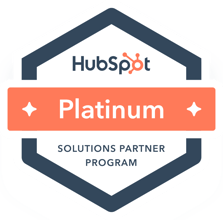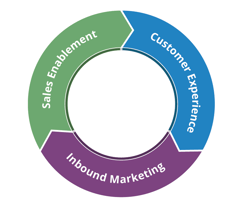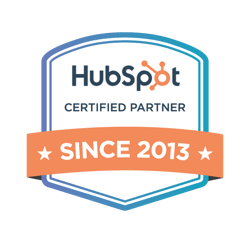Buried under an overwhelming mass of spam emails or muted on TV screens, outbound marketing is gradually fading from the modern customer's consciousness. In today's fast-paced digital world, consumers are more inclined to scroll through the internet, exploring various websites and social media platforms, and make their purchases online rather than respond to disruptive and unpleasant advertisements that interrupt their daily activities. The challenge of reaching consumers through traditional marketing methods, such as cold calls, print ads, and TV commercials, is becoming increasingly complex as these methods fail to capture the attention of a tech-savvy audience.
The solution to this problem? Inbound marketing. This approach is not only cost-effective but also proven to be more successful in engaging potential customers. Inbound marketing leverages digital media to strategically place your company in front of consumers at the precise moment and location they are actively searching for your products or services. The inbound marketing methodology, which consists of the stages attract, convert, close, and delight, revolves around creating high-quality, valuable content as a primary lead generation tool. This approach stands in stark contrast to expensive marketing methods such as buying ads or purchasing e-mail lists, which often yield lower returns on investment. By focusing on delivering content that resonates with the audience, inbound marketing fosters genuine connections and builds trust, ultimately leading to more meaningful and lasting customer relationships.
Inbound Marketing Attracts the Right Crowd
Blindly bombarding consumers with unsolicited messages and intrusive advertisements, outbound advertising is largely ineffective in today's digital landscape. Think about it—when was the last time you willingly took a sales call from a telemarketer or paid attention to a generic advertisement that interrupted your favorite TV show? Mass marketing not only wastes valuable time and resources but also produces 54% fewer leads than the more strategic and personalized approach of inbound marketing. Instead of casting a wide net and hoping for the best, it's far more effective to target and engage your consumers with educational and informative content that speaks directly to their needs and interests. By connecting with them on social media platforms where they spend most of their time and sending them only content that is relevant and valuable, you can create a more meaningful interaction. Inbound marketing enables you to attract your target audience by providing answers to any questions they may have about your project and/or services, thereby positioning your brand as a helpful resource. Remarkably, 90% of consumers find custom content useful, and 78% believe that organizations providing such content are genuinely interested in building good relationships with them. By establishing a trustworthy relationship with your leads, you not only construct credibility but also significantly enhance your chances of converting those leads into loyal customers. This approach not only fosters a sense of trust and reliability but also lays the groundwork for long-term, mutually beneficial customer relationships.
Inbound Marketing is More Cost-Effective
In comparison to traditional outbound marketing’s expensive methods, such as cold calls, TV commercials, radio ads, and print advertisements, inbound marketing offers a significantly lower cost structure. This is primarily because inbound marketing leverages the power of digital platforms and online tools, which are inherently more cost-effective. According to research conducted by HubSpot and Mashable, inbound marketing costs an impressive 62% less per lead than traditional outbound marketing. This substantial cost reduction is achieved because inbound marketing strategies focus on creating and distributing valuable content online, which eliminates the need for costly ad placements and extensive media buys. Furthermore, inbound marketing provides a sustainable and long-term marketing solution. Content such as blogs, videos, and social media posts continues to attract visitors and convert leads long after they are initially published. Imagine the power of having a blog post or an informative video you created three years ago still actively generating qualified leads and bringing in new customers for your business today! This enduring impact not only maximizes the return on investment but also ensures that your marketing efforts continue to pay dividends over time, making inbound marketing an efficient choice for businesses looking to optimize their marketing budgets.
Ultimately, inbound marketing is about helping people by providing them with the information and resources they need to make informed decisions. It's about becoming a trusted resource to your prospects and customers, offering them valuable insights and guidance throughout their buying journey. In today's information-rich environment, consumers are no longer passive recipients of marketing messages; they actively seek out information that is relevant and useful to them. They strive to have this information delivered directly to them at the precise moment and location they are searching for, whether it's through a search engine, social media, or a blog post. Inbound Marketing is designed to meet this demand by delivering content in a non-intrusive and constructive way, ensuring that the information is not only accessible but also tailored to their specific needs and interests. By doing so, it empowers consumers to make better purchasing decisions, fosters a sense of trust and reliability, and ultimately builds stronger, more meaningful relationships between businesses and their customers.
Questions? We're here to help!


__Square.png?width=250&height=250&name=Marketing_Hub_(1)__Square.png)




.png?width=250&name=diamond-badge-color%20(1).png)
